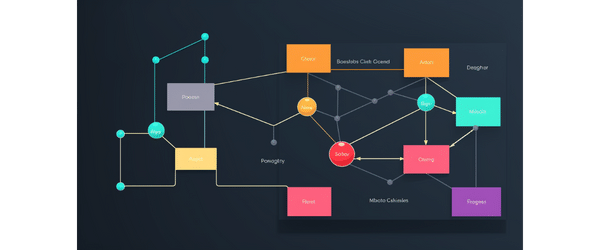Are you eager to learn how to create and initialize structs in Solidity? Look no further! In this article, we will guide you through the process step by step.
You’ll discover the syntax for creating structs, learn how to initialize struct variables, and explore different ways to access and modify struct data.
We will also provide you with best practices to ensure you’re using structs effectively in your Solidity projects.
Let’s dive in and unlock the power of structs together!
1. Key Takeaways
- Structs in Solidity allow for the creation of custom data types.
- Initializing struct variables in Solidity allows for setting initial values.
- Accessing the data stored within structs in Solidity is straightforward.
- Updating struct values requires careful consideration to prevent unexpected behavior.
2. Syntax for Creating Structs in Solidity
To create structs in Solidity, you’ll need to use the struct keyword. Structs in Solidity allow you to define custom data types that can hold different variables.
Declaring struct variables in Solidity involves specifying the struct type and assigning it a name. You can define struct types by listing the variables and their types within curly braces.
Now that you understand how to create struct types in Solidity, let’s move on to initializing struct variables in Solidity.
3. Initializing Structs Variables in Solidity
You can easily set the initial values for your struct variables in Solidity. Using structs in Solidity has several advantages, such as organizing and grouping related data together.
When initializing structs, it is important to avoid common mistakes, such as forgetting to assign a value to a struct variable or assigning incorrect data types. Carefully double-check your code to ensure accurate initialization.
Now let’s explore how to access the data stored within structs in Solidity.
4. Accessing Struct Data in Solidity
Once you’ve defined your struct variables, accessing the data stored within them is straightforward. You can retrieve struct data through function parameters, allowing you to easily manipulate and work with the values.
Solidity also supports implementing struct inheritance, which enables you to inherit the properties and functions of a parent struct. By utilizing these features, you can access and manipulate struct data efficiently in your Solidity code.
In the next section, we will explore how to modify struct values in Solidity.
5. Modifying Struct Values in Solidity
In order to update the values stored within a struct, simply assign new values to the desired struct variables.
When updating struct values in Solidity, it is important to be aware of common pitfalls. One common mistake is forgetting to assign a new value to all the struct variables, which can lead to unexpected behavior. Additionally, be cautious of overwriting existing struct data unintentionally.
Now, let’s explore some best practices for using structs in Solidity.
6. Best Practices for Using Structs in Solidity
When using structs in Solidity, it’s important to follow best practices to ensure efficient and reliable code. To help you avoid common mistakes and make the most of this powerful feature, consider the following tips:
- Avoiding Common Mistakes:
- Ensure all struct members are properly initialized to prevent unexpected behavior.
- Be mindful of gas costs when working with large structs to avoid excessive fees.
- Advanced Features and Techniques:
- Use mapping with structs for efficient data retrieval and manipulation.
- Implement structs as part of larger data structures to create complex systems.
- Using structs in Solidity efficiently is essential for writing secure and gas-efficient smart contracts. Here are some best practices to consider:
- Simplicity is Key: Keep your structs simple and straightforward. Avoid nesting multiple structs within each other, as it can lead to higher gas costs and potential complexity issues.
- Minimize Storage Usage: Be mindful of storage costs. Use arrays or mappings of structs instead of arrays of structs to save on storage expenses when dealing with multiple instances.
- Access Control: Implement proper access control mechanisms to restrict who can modify the data stored in structs. Utilize modifiers or access control lists (ACLs) to manage permissions effectively.
- Data Validation: Validate input data thoroughly before updating or creating structs. Preventing invalid data from entering your structs can help avoid unexpected behavior.

